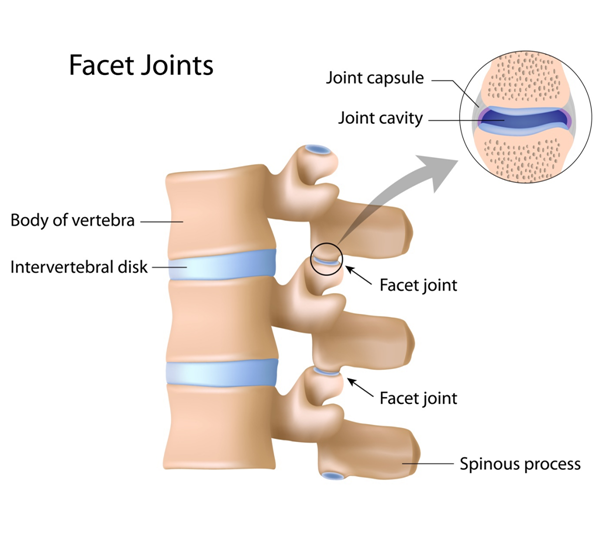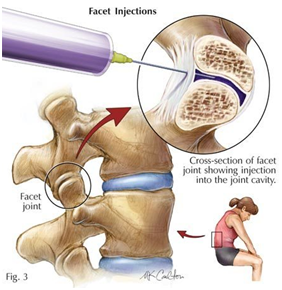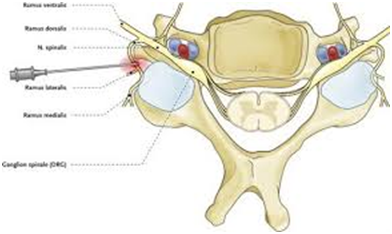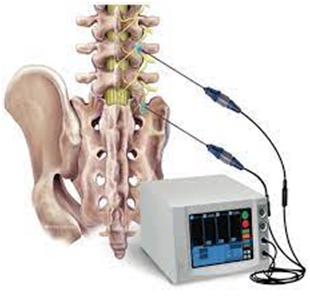| Category | Spinal (Back Pain) |
Facet Arthropathy (FA) is a painful, arthritic condition of the facet joints. These joints allow for bending, twisting, and alignment of the spine. The spinal nerves come off the spinal cord between the vertebra and the facet joints. At the front the vertebra rests on a spongy contained disc while at the back each of the two facet joints rest over the facet joint below it. In a healthy spine, the spinal disc and the facet joints support each other for healthy and safe movement.
Facet Arthropathy is often associated with chronic low back pain.

Facet Arthropathy can be affected by widespread arthritis of other joints seen in Ankylosing Spondylitis, Psoriatic Arthritis, and Rheumatoid Arthritis. Trauma such as small undiagnosed fractures, disc tears, cartilage splitting or haemorrhage in the area can be some associated findings.
We regularly observe patients with damaged and dysfunctional spinal discs presenting with facet joint damage at the same level in their spine. Loss of disc height and function places increased stress on the facet joints at that level, which can then cause wear and damage over time.
Osteoarthritis can cause lumbar facet pain. People with low back pain can also demonstrate X-Ray evidence of osteoarthritis. The severity of the symptoms also correlate with the degree of damage seen on the CT scan. Unusual orientation of the facet joints and enlarged ligaments can be associated with facet disease.
The synovial capsule may become distended and inflamed which puts pressure on the spinal nerves. When combined with degenerative arthritis and joint instability, pain in facet syndrome results in lower back pain. Rheumatoid arthritis is associated with damage to facets especially the mid-lumbar and lower lumbar areas.
Pain is the most common symptom of facet arthropathy. People with facet arthropathy may experience:
We will look for the source of your pain and discomfort. This will involve checking your nerve function and muscle strength, and whether you feel pain when moving or touching the affected area. We also will ask you about your medical history and your symptoms.
Imaging tests can help view the bones and muscles of your spine and identify any damaged areas. Examples of imaging scans include:
We can combine all these pieces of information to determine what is causing your pain, weakness, or discomfort.
While there is no cure for facet arthropathy, there are ways to effectively manage the pain. Nonsurgical treatment options include:

An injection of local anesthetic into a painful facet joint in the cervical, thoracic, or lumbar spine. A facet block usually has two goals: to help diagnose the cause and location of the pain and also to provide pain relief. Typically, a mixture of anesthetic (such as lidocaine) and an anti-inflammatory medication (such as cortisone) is injected into the joint.
It provides relief of back pain. The injection is inserted into the facet joints, which are located on each side of the vertebra and connect the vertebra of the back together. The injection helps reduce inflammation in the tissue of the facet joint. The injection is performed with the patient lying on his or her abdomen. Prior to the injection, the area of the skin where the medication will be injected is cleaned and numbed with local anesthetic. With the use of fluoroscopy (live x-ray), the radiologist injects a mixture of local anesthetic and steroid medication into the facet joint.
The doctor will clean the area over the spine and insert a small needle into the target area under imaging guidance. When it is in the correct position, they will inject the drug. They will remove the needle and cover the injection site with a small dressing.
We have very fast and competent working team (Consultant, fellow, clinical assistant, technician and ward assistant) which provide you comfortable atmosphere and ease your nerves. Usual time of stay is around few hours.
Every procedure carries a risk, although this is extremely small. The risk of infection with this procedure is extremely small as no incisions are made in the skin.
You can resume your work after 1 day if existing disease allows.
Rhizolysis is a minimally invasive technique for treatment of symptoms of chronic cervical and lumbar spine pain originating in the facet joints. This is a technique that deliberately damages the nerve that supplies the facet joint. These nerves are responsible for transmitting the pain that is caused by the facet joints.


The doctor will clean the area over the spine and insert a small needle into the target area under imaging guidance. When it is in the correct position, they will ablate the nerve. They will remove the needle and cover the injection site with a small dressing.
We have very fast and competent working team (Consultant, fellow, clinical assistant, technician and ward assistant) which provide you comfortable atmosphere and ease your nerves. Usual time of stay is around few hours.
Every procedure carries a risk, although this is extremely small. The risk of infection with this procedure is extremely small as no incisions are made in the skin.
You can resume your work after 1 day if existing disease allows.